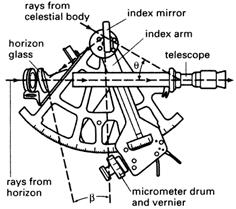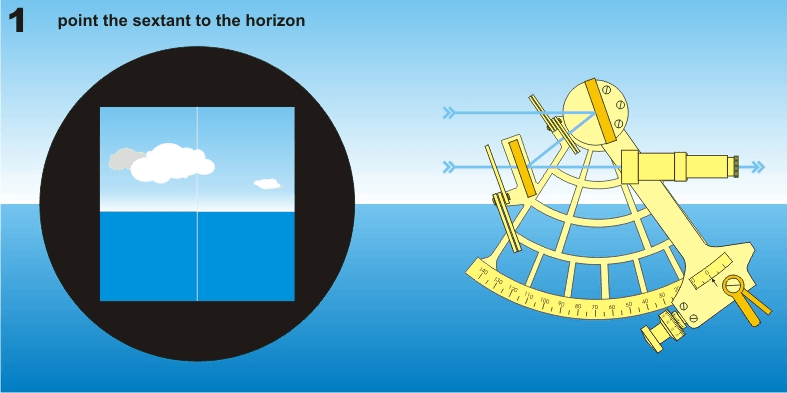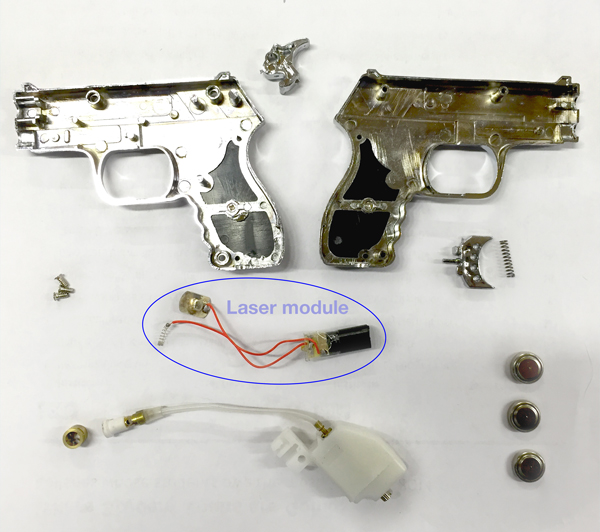As I was watching many tutorials on how to use a Sextant, I became very eager to try and use one. As mention in a previous post I am waiting for one to arrive.. In the meantime I started working on my own version of it. To explain the process that lead me to this version, you need to understand it just a little.
 If you take apart how Sextants work, you will find a quite simple principle. i’ll try to explain it through a step by step usage of Sextant.
If you take apart how Sextants work, you will find a quite simple principle. i’ll try to explain it through a step by step usage of Sextant.
Through a telescope the user needs to aim at 2 different objects at the same time (using a mirror). In the classic use of the instrument, the targets are the sun and the horizon line. We start by targeting only the sun while the moving arm is at 0 degrees (see illustration). Because of the reflection of the mirror, at this point the user will see two suns. The next step is to move the arm (adding units to arc ruler) until the user sees both the sun AND the horizon in the telescope. There is a technical step here that meant to assure the accuracy of the aim but Im gonna skip that since Im interested in the main principle.
 Essentially we are manipulating light to achieve a situation in which two object that are physically in different positions will look like they are at the same position, and we measure what we did to get to that (the move of the arm).
Essentially we are manipulating light to achieve a situation in which two object that are physically in different positions will look like they are at the same position, and we measure what we did to get to that (the move of the arm).
Applying the same principle, I took two laser modules and a protractor (a simple “low-tech” tool used by carpenters to measure angles), and made a device that can point and measure angles between objects.
The lasers I found inside of lighter gun from a costume store (8 dollar each – see pics) and the protractor I found in a Home Depot store (6 dollar). I added two switches so the laser would only work when switched on (free from junk shelf), I used the smooth rotating skills of a computer fan (again, somebody’s junk) to make the rotational pan move, and with wood left overs I made a small tripod with a hinge to allow a tilt move as well.

An Important missing piece that I didn’t explain in the Sextant usage, is the use of trigonometry to find out more information about location and position. In the classic use (celestial navigation) the user would need to know the time of measurement, and the location of the object being measured – in this case the sun. There are books (such as the HO 299) and maps and diagrams (such as a Volvelle) with that info that are made for these calculations but either way – with only a Sextant, a watch and book, one can make many conclusions and use these to navigate!
so cool! i *love* the way it looks in the photo – all purposeful, janky. does it work??? can we try it?
Thank you, and yes it works!
Pingback: Physical link | Oryan Inbar